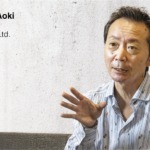GK spoke to Masatoshi Kato, the president of Karimoku Furniture, one of Japan’s leading boutique furniture manufacturers. We spoke about the role of technology in furniture design, as well as changing demographic trends when it comes to homeware preferences.
What do you believe are the unique aspects surrounding the Japanese manufacturing industry?
I used to read books by Jeffrey Archer that talked about differences in quality between American, Japanese, and Germany automobiles. He said that German vehicles were so fantastic at this time, and that the Americans had to catch up. At that time, Japanese vehicles were rather poor quality, especially in the 1960s.
However, over the years they have refined their techniques, and have now become a symbol of ‘high quality’. Although not all have been successful, more and more actors are working towards the security and quality of their products, although this does contribute to a slower rate of R&D.
With Karimoku’s longstanding focus on high-quality materials and craftsmanship, how does the company balance these trends with durability and sustainability?
Initially, our business model focused on showcasing 20 to 30 new products at trade shows, finding the most popular item and then growing it as our signature brand. The surrounding products were then developed over the next few years. This was the model until the year 2000, when we shifted to promoting ‘long-life furniture’. We upgraded the upholstery, paint and quality of materials used for the Japanese market, ensuring that durability is ensured for a longer time, as well as offering maintenance services that we trained our staff to provide.
We have had some impact on our business given the increased awareness surrounding sustainability. Within our company, we have established our own committee to help target some of the specific goals in this area.
How are changing consumer trends regarding e-commerce affecting your business?
The furniture industry had been heavily relying on catalogue sales for a large portion of its history, with this channel accounting for around 30% of total sales. When e-commerce began to gain in popularity, most manufacturers tried to shift to channels in this direction, which of course we followed. Our ‘Rokumaru’ collection targeting 20–30-year-old male customers has been sold through Amazon since 2018 to this end.
During the pandemic, however, Prime Minister Abe declared a state of emergency, meaning that many commercial facilities had to shut down, with our weekly sales decreasing by 80%, a record worst for our company. Thankfully, the Amazon channel allowed us to maintain a level of sales during this time, so we see it as a useful survival tactic in the future. We have set up our own e-commerce channel, with our employees working hard to build its popularity.









